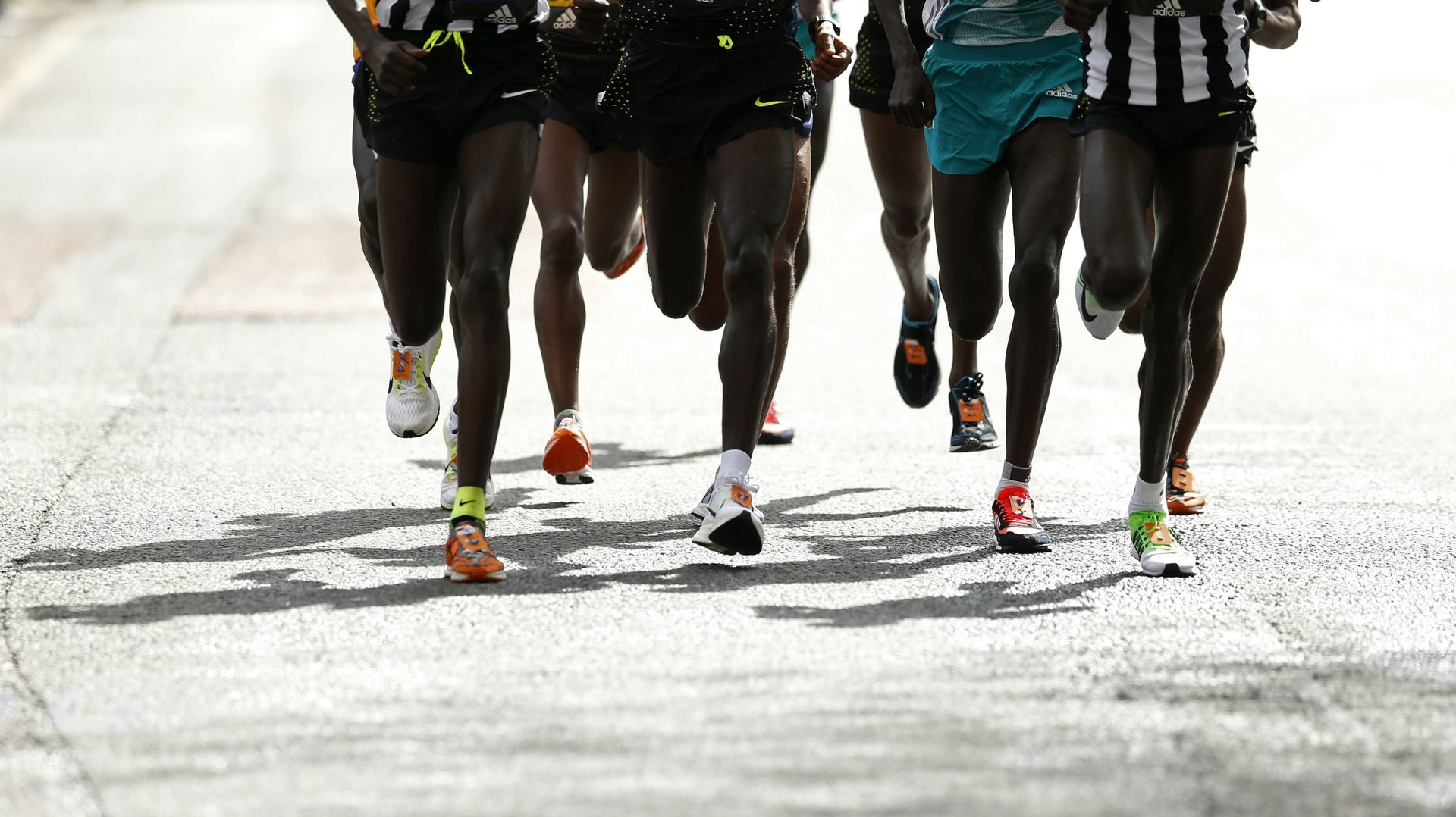Nike thinks it knows how to finally break the two-hour marathon
Two minutes and 58 seconds. Just under the amount of time it takes to play your favorite song is all that separates the fastest men in the world from breaching the two-hour marathon.


Two minutes and 58 seconds. Just under the amount of time it takes to play your favorite song is all that separates the fastest men in the world from breaching the two-hour marathon.
Running a marathon—26.2 miles (42.1 km)—in two hours or less has been the elite runner’s white whale since the 1950s, when the sport first became popular. In theory, it should be possible: As an undergraduate at the University of Arizona in 1991, Mike Joyner, (now an anesthesiologist at the Mayo Clinic in Rochester, Minnesota) published a paper in the Journal of Applied Physiology where he used physiological variables to calculate that the best athletes should be able to run a full marathon in 1:57:58. At the time, the record was 2:06:50, held by Belayneh Dinsamo of Ethiopia.
Fifteen years later, we still haven’t gotten under two hours: The current record is held by Dennis Kimetto from Kenya, who ran a 2:02:57—just under four minutes of progress.
The progress has been incremental, and the rate of improvement is beginning to slow down. But a couple of athletic manufacturers are now trying to push the world’s best runners over the cliff.
On Dec. 12, Nike announced a campaign to try to make the two-hour marathon happen 2017; on Dec. 16, the Wall Street Journal reported (paywall) that Adidas has been working on the same project for two years (although the athletic company did not comment on the matter). Nike, for its part, is recruiting some of the world’s fastest runners—including Zersenay Tadese, an Eritrean who holds the world record for the half marathon at 58:23—and a team of scientists to execute the fastest marathon ever.
So what will it take to push these runners under the threshold? Physically, probably not much more than they’ve been doing for years. Professional running coaches have nearly perfected the art of training to squeeze the most speed and endurance possible out of runners’ bodies. These runners have the best lung capacity of anyone on the planet, and can clear their muscles of any of the byproducts that come from powering movement more efficiently than anyone. And they train like crazy, often hitting more than 120 miles a week. They’re mentally and physically tough.
That’s not to say that what these runners do feels effortless: Joyner, who completed a 2:25 marathon in his prime running days, described the feeling of maintaining an incredibly high speed for miles as putting your hand under warm water, and increasing that temperature over an hour and a half until it’s as hot as you can stand. Then see how long you can endure it. And imagine it’s your whole body. While most people would give anything to ignore that sensation, elite runners have to pay close attention to it. “They use their breathing and different sensations they have like a dashboard,” Joyner says.
If the 2017 Nike experiment is going to work, they’re going to have make sure that these runners are at their top physical game, and ready to endure some kind of pain. But they’re also going to have to iron out the details of the race.
Ideally, Joyner says, runners would have a flat course on the right material—Runner’s World ranks synthetic track and asphalt as the fastest. They would all be cruising at the same, consistent pace and create a slight draft effect, which slightly reduces the resistance from the air as they surge forward. The weather would be cool, but not too cold—around 45°F (about 7°C) to prevent any energy loss trying to get rid of excess heat, or warming up additionally. They’ll have to have perfect nutrition, and the right shoes and sweat-wicking fabric—which Nike is sure to supply.
And of course, a bit of luck. The trouble with marathoning is it’s such an extreme physical feat that runners can’t put their bodies through it every week. They have to choose their races carefully to get the biggest payoff either by breaking records or winning prize money.
Joyner doesn’t think that two hours will be broken next year. “It’s unusual to break records by more than 1%,” he says—based on the current record, that’s about a minute. “I think if you had the right day and a bit of luck with the right runners, [he could hit] the low 2:02s.”
Still, that’s pushing human limits in the right direction. Joyner estimates that at this rate someone will break the two-hour marathon by 2040. But maybe it’ll happen sooner. ”The fun begins when the record is in the 2:01’s,” he says.